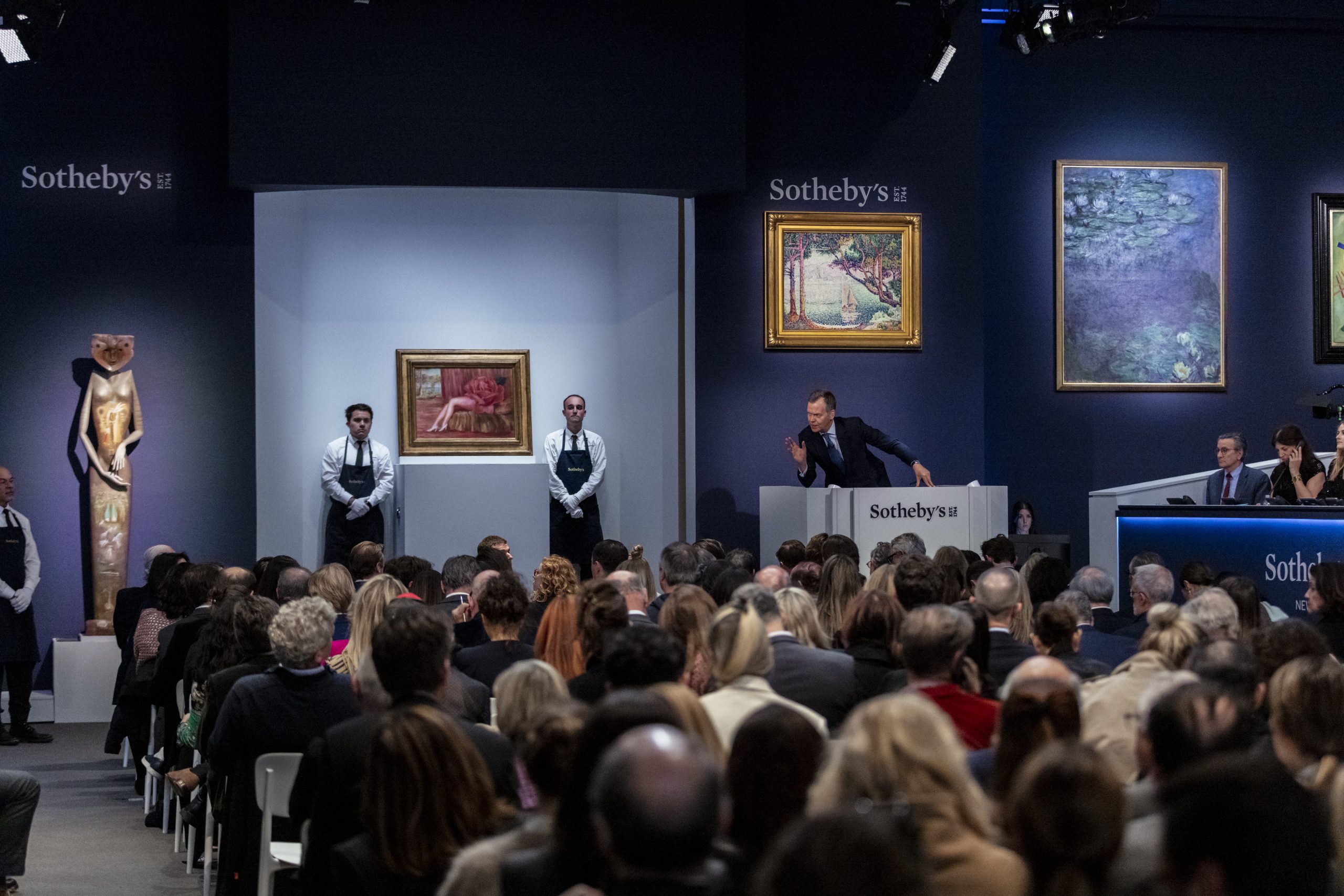After Sam Bankman-Fried’s epic fall from grace last year, news started circulating that he had been shadowed by Michael Lewis, the writer famous for his exposés of financial greed and impunity like Liar’s Poker and The Big Short, for several months prior to the FTX crash. In the weeks after his indictment, Lewis was reported to have visited Bankman-Fried while under house arrest in Palo Alto to continue gathering material for a book, sure to be a best-seller, on the rise and fall of the crypto boy-king. But what’s striking is, aside from Lewis, how few serious journalists gave his business practices a passing glance before they blew up in spectacular fashion. Despite the many gushing profiles that appeared in the years before the FTX crash, not a single reporter had bothered to look closely into his too-good-to-be-true scam—an oversight that might be more than a coincidence. The former billionaire and doyen of the “effective altruism” movement, it turned out, had been quietly funneling millions of dollars through his family foundation to journalism outlets like ProPublica, the Intercept, Semafor and Vox. In 2022 ProPublica had been awarded five million dollars for its work on “biothreats” and pandemic preparedness (it had only received a third of the money). Vox, for its part, had bagged $200,000 for a change-the-world section called Future Perfect that was, according to its initial explainer, “deeply inspired” by effective altruism. Amid the mea culpas and half-hearted apologies which followed Bankman-Fried’s arrest, most offered to put their grants on hold, and some have announced their intent to send the money back.
Chancers and nonprofit entrepreneurs like Bankman-Fried are only the tip of a very expensive iceberg. A cool quarter of a billion dollars, according to a study published in Columbia Journalism Review, flowed from the Bill and Melinda Gates Foundation into journalism-related activities in the first half of 2020 alone. Recipients included everyone from the New York Times to NBC, the BBC, Al Jazeera and the Guardian. (Reporting for the CJR study, in turn, was paid for by another foundation, the Alicia Patterson Foundation.)
Meanwhile, the numbers of employed journalists continue to fall precipitously almost everywhere in the Western world, leaving many areas without a local paper at all. Newsroom employment in the United States, according to Pew Research Center, dropped 23 percent between 2008 and 2019—and at newspapers specifically, it dropped by a full 51 percent. In the news industry, almost all the conversation still turns on how to make ends meet: how to make up for the shortfall in classified advertising and cut costs, often by sacking journalists. Lost in all this is a much more troublesome and uncomfortable question: Who picks up the tab of paying for journalism when the audience won’t, and how does that change the truths that we journalists want to tell?
One emerging answer to the first question is big philanthropy. The equation behind this arrangement is simple. Even as journalism has become a good deal poorer in the last few decades, nongovernmental organizations and foundations have become vastly richer and more numerous. In an era of shrinking budgets, the collapse of newsroom expertise and the hollowing out of local news journalism, activist NGOs and foundations of all kinds have more resources to do research and to fund other people doing it. Many of them are now picking up the slack of doing serious investigative reporting. Welcome to the era of the “nonprofit newsroom.”
●
According to data from Media Impact Funders, newsrooms around the world raised a record $619.5 million from donors in 2020. In the U.K., where philanthropic giving has traditionally been meagre compared to the United States, research by the industry website Press Gazette estimates that newsrooms received an unprecedented 77 million pounds in the years between 2019 and 2022.
Some of these nonprofits are paid for by public donations and are, at least in principle, answerable to those who give them the money. But public support has been cut too, and compassion fatigue has set in. Filling in the gap, along with the governments who often work closely alongside them, are rich philanthropists. Some are libertarian billionaires, like the Kochs. But most of the money currently flowing into journalism comes from a handful of liberal humanitarians—people like Bill and Melinda Gates, George Soros, Michael Bloomberg and Pierre Omidyar. These philanthropists may be well-meaning enough, but the truth is that most “activist” NGOs and big foundations aren’t really in the truth-telling business at all, and most have zero interest in journalism and its values per se. Instead, they want to use it to advance their objectives. One of those objectives, lavishly bankrolled by big liberal foundations as well as Google and Facebook, is to address the lack of trust in media by cracking down on “fake news” and “misinformation.” Thus far, it’s mainly meant giving liberal and mainstream media a free pass while turning their “fact-checking” programs on everyone else.
Of course, some nonprofit newsrooms do excellent work: ProPublica, for example, whose money frequently allows some of America’s most talented investigative reporters the time to find stories and follow them wherever they need to go. And while some foundation-funded NGOs have played an important role rooting out corruption, others, like ambulance-chasing lawyers, lazily solicit victims in a highly competitive global market, or too quickly take sides in complicated local conflicts. As a result, reporting that relies on NGOs and activist groups too easily tells one side of the story, and occasionally purveys fake stories. This, at least, is what I found over the course of writing a story for Harper’s about the New York Times’s Caliphate imbroglio and an investigation for GQ into one of the defining stories of the early Syrian rebellion, the slaying of the singer Ibrahim Qashoush, which turned out to be the opposite of the truth. The origins of the Caliphate yarn lay in a bulletin from the nonprofit press monitoring service called MEMRI, whereas the fake Qashoush story was spread by Syrian Local Coordinating Committees, activist media outfits that received modest support from Western governments and allied NGOs early in the uprising.
Equally, regular journalism plumped up with NGO filler and paid for with foundation dough too easily becomes either risibly partisan or a kind of kitsch churned out without regard for anything someone might want to read. (And you usually have to get to the end of the article to find out which foundation paid for it.)
One reason is that it tends to replace real stories with issues. Worse, foundation money often comes with demands for a commodified, quantifiable “impact”—some sliver of evidence that the bean-counters can show donors that the reporting they’re bankrolling has changed the world. (Quantifying impact, as it happens, is also one of the obsessions of Bankman-Fried’s effective altruism movement.) Journalists always want their work to make a difference, otherwise they’d have become bean-counters themselves. But good journalism is not about changing the world: it’s about properly informing readers so they can change it. A necessary condition for public-interest reporting is that people care, or can be made to care and read what you write. But who cares about story and audience when the journalism is already paid for, and when the real audience is not the public but a tiny echo chamber of funders and policy-makers?
●
The best journalism, of course, is often far from impartial. Impassioned, campaigning journalism, sometimes with the help of courageous whistleblowers, has long been central to good reporting. In the old days, the job of the investigative reporter was to unearth difficult truths and then spruce them up for publication. Journalism, according to the old adage, was stuff that someone doesn’t want you to read; everything else was advertising. It was far from perfect, this era of take-no-prisoners muckraking, and in its later years it became complacent, cozy and sometimes corrupt—think of the American reporting that led up to the war on Iraq, or the phone-hacking scandals in the U.S. But it was hard work in the service of story and a mass audience, which paid for it in their millions. And it wasn’t afraid to make powerful enemies at home.
That sort of journalism is in danger of dying out. In his 2008 book Flat Earth News, the British journalist Nick Davies argued that the nutritious spread of information once on offer from reading the newspaper was quietly being replaced by hidden additives. The additives were supplied by everyone from public relations firms to intelligence agencies, flagged through on the nod because newsrooms had neither the time, nor sometimes the inclination, to evaluate it critically. “In an imaginary world,” he concluded, “we might demand that media products should be treated like food products which are required to carry a clear label to inform consumers of their contents.”
Writing fifteen years ago, Davies didn’t have much to say about the rise of NGOs and nonprofit, mission-driven journalism, a sector that has grown substantially in the past decade. But the same credulity with which some journalists used to report official briefings from government sources now happens, in overstretched newsrooms, when reports and briefings come in from an NGO. The result is often a flattening and a narrowing of journalism’s potential to surprise, to take risks and, yes—to make trouble. When powerful foundations co-brand news stories in the Guardian and elsewhere, anyone schooled in liberal values has to ask themselves—are we getting the whole truth, or a story twisted out to shape to suit those who are paying for it?
In recent years the New York Times and others have published valuable work about how supposedly independent think tanks buy power and influence for foreign corporations and nations in Washington. But the funding of serious journalism by NGOs and big philanthropy still goes mostly unremarked. (A good sign was the Times’s recent hire of an investigative reporter to cover nonprofits.) When it does, concerns are largely limited to the immediate conflicts of interest thrown up by foundation funding. The author of that study chronicling the extent to which journalism is now funded by big foundations, Tim Schwab, for example, wrote a follow-up article for CJR interrogating whether all this new money will affect how newsrooms report on their new benefactors.
He’s right to be concerned—journalism must reserve the right to bite the hands that feed it. But there’s an even more important issue at stake. The institutionalization of activism in big, powerful NGOs and foundations, many with broad international reach and budgets rivaling those of small countries, offers only the thinnest veneer of a healthy civil society, and a parody of a genuine independent media. Most of those who work in this realm are sincere about their mission, but when they lose sight of the reading audience in search of policy objectives and “impact,” they’re doing democracy a disservice. They’re also in danger of creating a Potemkin village of liberal media.
What we need now is greater awareness of the new additives in our news diet, and institutional structures that allow genuinely independent journalism to reassert itself. That doesn’t always mean refusing the foundation money—someone needs to pick up the check if journalism is to survive—but it does mean that we establish inviolable new walls, akin to the traditional separation between advertising and editorial, between these skittish, whimsical billionaires and the reporters who know what journalism is and can achieve. (In France, for example, a nonprofit called Fonds Pour Une Presse Libre was set up in 2019 to funnel money to independent media and establish a barrier between the foundations and the journalism they claim to want to help.) In the U.S., the American Journalism Project does something similar as an intermediary between philanthropy and new local-news outfits. The thorny problem is that many grants to outlets are inherently editorial, and come with a blandly inoffensive liberal bias. Part of the solution lies in education. Philanthropists want to teach journalism how to survive. But we need to teach them what good journalism is and how to support it—to forgo narrow agendas in favor of letting a thousand flowers bloom.
Who watches these new watchers, who want to change the world in their own image and are exerting under-the-radar influence over our civil society? It’s a question which should have come up long before one of them found himself under house arrest. If it doesn’t receive a satisfactory answer, it’s going to continue fueling conspiracy theories and wholesale mistrust of the media—exactly the afflictions that these billionaire altruists have made it their business to stamp out.










